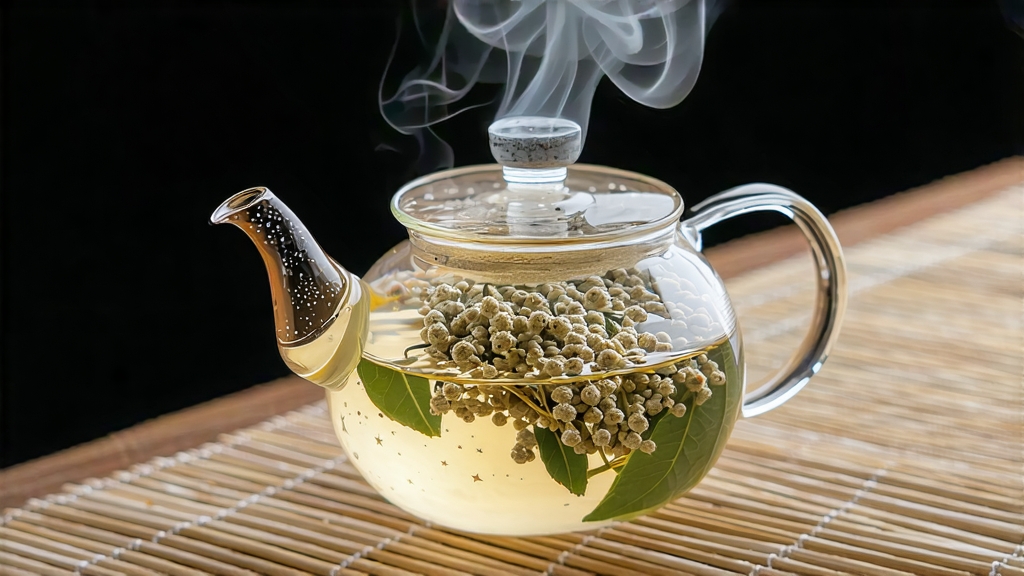
If green tea is the youthful murmur of spring and pu-erh the gravelly wisdom of autumn, then White Hair Silver Needle—Bai Hao Yin Zhen—must be the hushed midnight conversation between moon and mist. Revered as the aristocrat of Chinese white tea, Silver Needle is plucked only for a few fleeting mornings each early spring, when the mountain air is still cold enough to crystallize dew on the unopened buds. What follows is not manufacture in the usual sense, but a kind of vegetal meditation: the buds are allowed to lie down and dream, exhaling their greenness until only a translucent memory of leaf remains.
The documented story begins in the 1796s, when tea merchants in Fuding county, northern Fujian, started shipping small lots of “needles” down the Min River to the port of Fuzhou. British and Dutch agents mistook the fuzzy, ivory-coloured buds for withered flowers; once infused, the liquor astonished them with a nectar-like sweetness devoid of any astringency. By the late Qing dynasty the tea had become a tributary item, travelling in silk-lined boxes to the imperial court in Beijing. Legends soon embroidered the facts: one tale claims the buds must be picked by virgins with golden scissors so the silver down is not tarnished by human breath; another insists the tea was first discovered when a white egret dropped a single bud into a farmer’s kettle.
Botanically, Silver Needle is almost always the Da Bai (Big White) cultivar, whose buds can exceed three centimetres and sheath themselves in a down so dense it resembles frost. Lesser grades may use the related Xiao Bai (Small White) or the heart-shaped Shui Xian Bai, but connoisseurs look for the plump, “pearl-head” buds harvested before the Qingming festival. After picking, no frying, rolling or roasting intrudes: the buds are spread one layer deep on bamboo trays and left to wither for thirty-six to forty-eight hours. In the highlands around Taimu Mountain this happens inside airy attics where mountain wind slides through louvered windows; on calm nights the trays are carried outside to absorb moonlight, a practice believed to soften tannic edges and amplify amino acids. When moisture drops below ten percent, a final twenty-minute bake at 40 °C sets the fragrance without adding colour.
The resulting leaf is an object of quiet beauty: straight, uniform spears the colour of weathered ivory, each tipped with a tiny hook and clad in microscopic trichomes that glitter when rotated under light. Aroma is subdued—dried hay, steamed rice, a suggestion of cucumber skin—yet once awakened by water the buds exhale layers of honeydew, white peach and the cool scent of crushed oyster shell.
To brew Silver Needle respectfully, begin with still mineral water around 80 °C; boiling water shocks the down and coaxes unwanted vegetal notes. Measure three grams—roughly two heaping teaspoons—into a tall glass or a gaiwan of 150 ml. After a five-second rinse to awaken the buds, infuse for forty-five seconds. The first pour should be the colour of pale chardonnay, almost transparent, delivering a texture so weightless it seems to evaporate off the tongue, leaving behind a lingering sweetness known in Chinese as huigan, or “returning sweetness.” Subsequent infusions can be lengthened by ten seconds; a quality lot will yield five to seven brews, each acquiring a fraction more colour and a whisper of new aroma—sometimes lilac, sometimes fresh cream.
Western drinkers often under-appreciate white tea because they treat it like a green tea, scalding the leaf and over-steeping. A forgiving alternative is cold infusion: place six grams in a litre of refrigerated spring water for six hours. The outcome is a liquor that tastes like liquid moonlight—cool, softly sweet, with a finish that reminds some of alpine snowmelt.
Professional tasting follows a quiet choreography. First, warm the aroma cup; inhale the dry scent twice, once with eyes open to register colour, once closed to isolate fragrance. After the initial infusion, roll the liquor around the mouth while “chewing” gently with the tongue to aerate. Swallow, then part the lips slightly to draw air across the palate, allowing volatile compounds to rise into the retronasal cavity. With Silver Needle the flavour arc is less about peaks and valleys than about duration: the sweetness arrives late, blooms, then hovers for